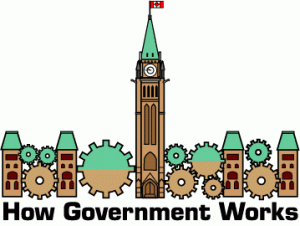Sixth Unit of Inquiry – How we organize ourselves
24 April – 9 June, 2017

| Central Idea | Government systems determine the quality of life of citizens |
| Lines of inquiry |
|
| Key Concepts | Function, Perspective and Responsibility |
Resources:
https://www.youtube.com/watch?v=EUS1m5MSt9k govt explained
https://www.youtube.com/watch?v=NhSqzANQvbk govt explained part 2
https://www.youtube.com/watch?v=vdh9xo47OWM simple approach to types of govt
https://www.youtube.com/watch?v=4quK60FUvkY presidential vs parliamentary democracy
http://mocomi.com/types-of-government/ Indian Govt system
http://www.congressforkids.net/Constitution_threebranches.htm three branches explained of the US govt
http://kids.usa.gov/three-branches-of-government/index.shtml
https://www.youtube.com/watch?v=y5W45Va0cPE- swiss’s direct democracy
Learning outcomes:
- Use and analyse evidence from a variety of historical, geographical and societal sources
- Identify roles, rights and responsibilities in society
- Identify various people and groups who make, apply, and enforce rules and laws for others (e.g., city councils, governors, national governments) and who manage disputes about rules and laws (e.g., courts at all levels)
- Explain possible consequences of the absence of government and rules and laws (e.g., the strong may take advantage of the weak, people may become disorderly or violent)
- Discuss the major responsibilities of the legislative, executive, and judicial branches of government
- Describe how state and local government officials are chosen (i.e., by election or by appointment
- Realize how people can participate in their state and local government (e.g., being informed, taking part in discussing issues, voting, volunteering), and understand the importance of people participation
Active Living
People go through different life stages, developing at different rates from one another.
- Self-assess performance and respond to feedback on performance from others
Creating in Dance
Arts have the power to influence thinking and behaviour.
- Perform increasingly more difficult sequences with control
Creating in Music
Arts have the power to influence thinking and behaviour.
- Create a musical composition expressing their own ideas and feelings on a social issue
- Create and record a composition focusing on form, structure and style to give more meaning to their message
- Express themselves as individuals through musical compositions
- Deliver a musical message to different audiences (for example, peace message to parents, kindergarten children, friends)
Creating in Visual Arts
We explore a range of possibilities and perspectives to communicate in broader ways through our creative work.
- Become increasingly independent in the realization of the creative process
- Identify factors to be considered when displaying an artwork
- Develop an awareness of their personal preferences
Identity
Understanding ourselves helps us to understand and empathize with others
- Explain how a person’s identity is made up of many different things, including membership in different cultures, and that this can change overtime
- Embrace optimism to shape a positive attitude towards themselves and their future
Interactions
Behaviour can be modified by applying deliberate strategies.
- Adopt a variety of roles for the needs of the group, for example, leader, presenter
- Apply different strategies when attempting to resolve conflict
Listening and Speaking
Taking time to reflect on what we hear and say helps us to make informed judgments and form new opinions.
- Listen appreciatively and responsively, presenting their own point of view and respecting the views of others
- Argue persuasively and defend a point of view
- Explain and discuss their own writing with peers and adults
- Organize thoughts and feelings before speaking
Reading
Checking, rereading and correcting our own reading as we go enable us to read new and more complex texts.
- Read a variety of books for pleasure, instruction and information, reflect regularly on reading and set future goals
- Understand and respond to the ideas, feelings and attitudes expressed in various texts, showing empathy for characters
Responding in Dance
There are different kinds of audiences responding to different arts.
- Recognize that dance plays an innovative role in communicating ideas within cultures and societies
Responding in Music
When experiencing arts, we can make connections between different cultures, places and themes.
- Compare aspects of music from different times and places
- Describe the process used to create their own music and compare it with others, in order to improve their compositions
Responding in Visual Arts
We use what we know to interpret arts and deepen our understanding of ourselves and the world around us.
- Use their knowledge and experiences to make informed interpretations of artworks
- Provide constructive criticism when responding to artwork
Shape and Space
Shapes can be transformed in different ways.
Constructing meaning
- Understand the common language used to describe shapes
- Understand the properties of regular and irregular polygons
- Understand congruent or similar shapes
- Understand an angle as a measure of rotation
- Understand that visualization of shape and space is a strategy for solving problems
Transferring meaning into symbols
- Sort, describe and model regular and irregular polygons
- Describe and model congruency and similarity in 2D shapes
- Analyze angles by comparing and describing rotations: whole turn; half turn; quarter turn; north, south, east and west on a compass
- Locate features on a grid using coordinates
- Describe and/or represent mental images of objects, patterns, and paths
Applying with understanding
- Analyze and describe 2D and 3D shapes, including regular and irregular polygons, using geometrical vocabulary
- Identify, describe and model congruency and similarity in 2D shapes
- Recognize and explain symmetrical patterns, including tessellation, in the environment
Viewing and Presenting
Interpreting visual texts involves making an informed judgment about the intention of the message.
- View, respond to and describe visual information, communicating understanding in oral, written and visual form
Writing
Writing and thinking work together to enable us to express ideas and convey meaning.
- Show awareness of different audiences and adapt writing appropriately
- Organize ideas in a logical sequence
- Reread, edit and revise to improve their own writing, for example, content, language, organization
- Work independently, to produce written work that is legible and well-presented, written either by hand or in digital format
How https://www.mscareergirl.com/top-tips-and-tools-to-create-a-profitable-blog/ much quality control is done on content
